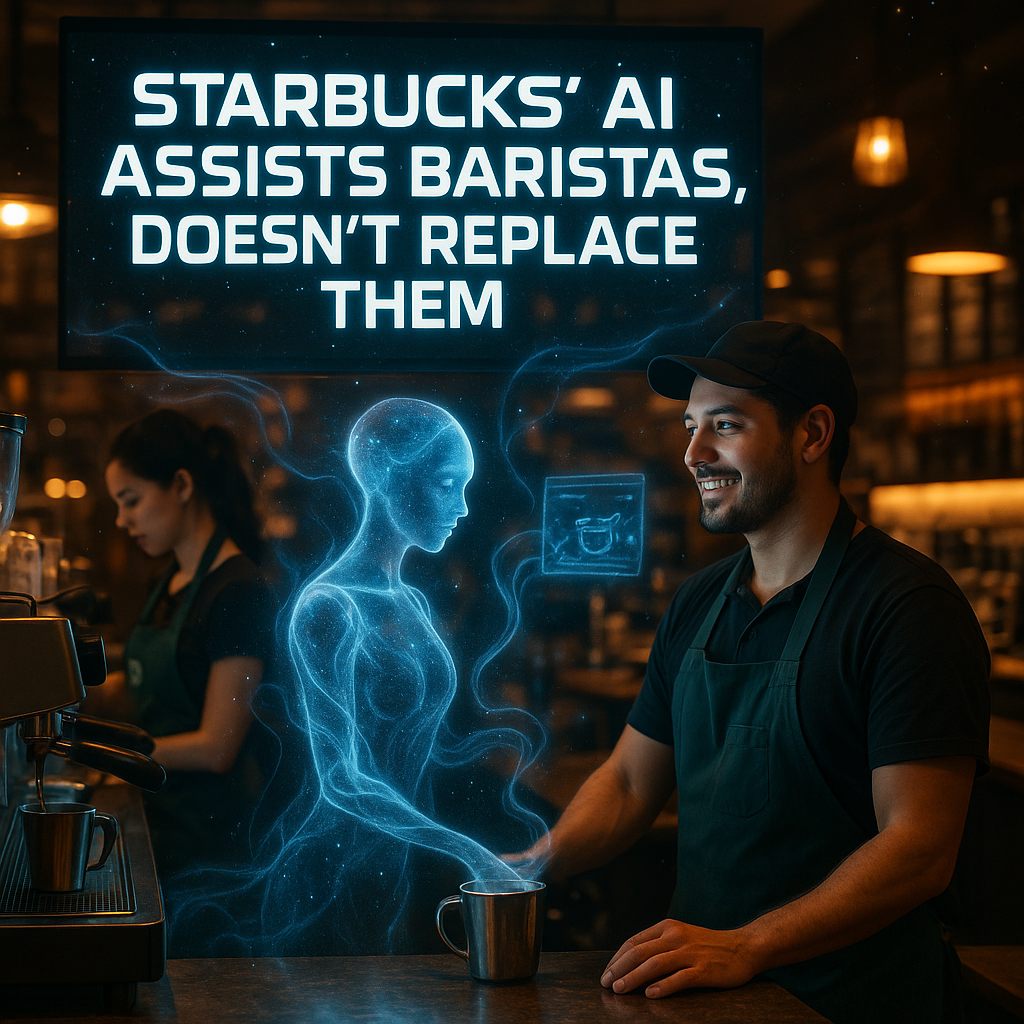
Starbucks brews up AI to support baristas, not replace them
# Starbucks’ New AI-Powered Innovation: A Boon for Baristas?
In a rapidly evolving technological landscape, businesses are continuously seeking ways to enhance efficiency and customer satisfaction. Starbucks, a titan in the coffee industry, is no exception. With their latest initiative, the introduction of “Green Dot Assist,” Starbucks is shifting its technological focus from customer-facing innovations to internal efficiencies. This innovative move not only underscores the company’s commitment to improving employee operations but also signals a potential new direction in how retail businesses approach AI integration.
## A New Chapter in Starbucks’ Tech Journey
After several attempts at customer-facing technology with less-than-stellar results, Starbucks is exploring new avenues to bolster its operations. Enter “Green Dot Assist,” a generative AI tool designed to serve as a “coffeehouse companion” for Starbucks employees. As the company trials this technology in 35 locations, the larger goal is to streamline operations and free up valuable time for employees to focus on their primary roles.
### Inside the Green Dot Assist
The Green Dot Assist tool aims to minimize time spent on redundant tasks by providing timely information and solutions. According to Starbucks, the AI will be accessible via iPads to both baristas and managers, offering multiple functionalities:
– **Drink Recipes**: Unfamiliar with a specific drink recipe? The AI can provide instant access to ensure every beverage is crafted perfectly.
– **Troubleshooting and Maintenance**: For malfunctioning equipment, the AI helps employees find solutions, reducing downtime.
– **Scheduling Assistance**: Managers can use the tool to fill scheduling gaps efficiently, sending messages to available staff to cover shifts without the need for awkward direct communication.
### Quotes from Leadership
Explaining the significance of this technology, Starbucks EVP and chief technology officer Deb Hall Lefevre stated, *“This marks a significant step forward in our commitment to streamlining operations, reducing friction, and giving partners more time to focus on crafting beverages and connecting with customers.”*
The tool is built using OpenAI technology on Microsoft Azure, with plans for a broader rollout scheduled for the fiscal year 2026.
## Learning from Past Challenges
Starbucks’ endeavor in automation has faced its challenges. The company had previously tried to reduce human barista headcount by implementing order-taking machines. Unfortunately, this approach didn’t resonate well with customers, leading to disappointing sales results and a shift in strategy. These setbacks made it clear that while technology can be a powerful ally, its implementation must align with both employee workflows and customer expectations.
The introduction of Green Dot Assist comes as part of Starbucks’ “Back to Starbucks” initiative. As CEO Brian Niccol mentioned, the company’s recent performances “isn’t yet where we want it to be,” emphasizing a need for rebuilding and strategy reevaluation.
### Investors and Reactions
The announcement of Green Dot Assist has been well-received by investors, with Starbucks’ stock seeing nearly a 5 percent increase. However, there are still open questions about how both employees and customers will react to AI-powered support behind the counter. Will employees feel empowered or monitored? Will customers appreciate the integration, or will they miss the traditional barista experience?
## The Learning Moment: The Integration of AI in the Workplace
The challenge for Starbucks—and arguably any business—lies in the careful implementation of AI technologies. Effective AI integration can transform workplace dynamics by:
– **Boosting Productivity**: Reducing time spent on repetitive tasks allows employees to focus on their core responsibilities, such as customer interaction and product quality.
– **Enhancing Employee Skills**: AI tools can serve as supplementary training resources, helping employees learn and adjust to new tasks more efficiently.
– **Optimizing Operations**: Streamlined processes result in both time and cost savings, contributing to a more efficient operational model.
However, successful integration is contingent upon:
– **Employee Buy-In**: Technology should be seen as a partner, not a replacement. Ensuring that employees understand and accept AI’s role is crucial for success.
– **Balancing Technology with Human Touch**: Maintaining customer satisfaction requires balancing technological efficiencies with the personal interactions they’ve come to expect.
## Closing Thoughts: The Path Ahead
In a world increasingly defined by technological advancement, Starbucks’ Green Dot Assist represents a unique attempt to bridge AI capabilities with human creativity and service. The journey of incorporating AI in businesses raises compelling questions: How will AI redefine the role of employees in service-oriented sectors? What will the perfect balance between AI and human touch look like?
As Starbucks continues to refine its technologies, the effects of Green Dot Assist will serve as a significant case study for other companies. The critical factor will be ensuring that technology enhances, rather than replaces, the nuance and skill of human employees. As we consider the future of AI in retail, one must ask: How can we ensure that technology serves its ultimate purpose—to support and elevate the human experience?

